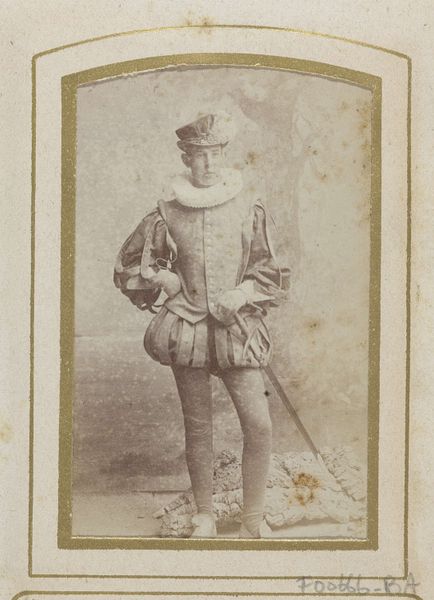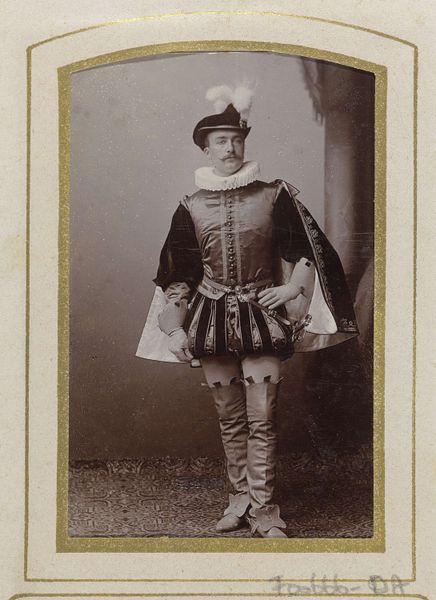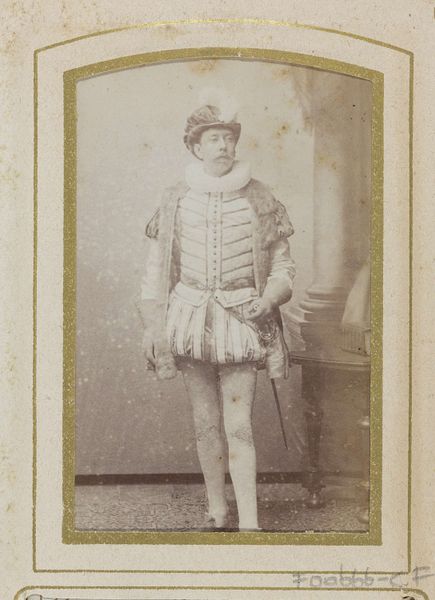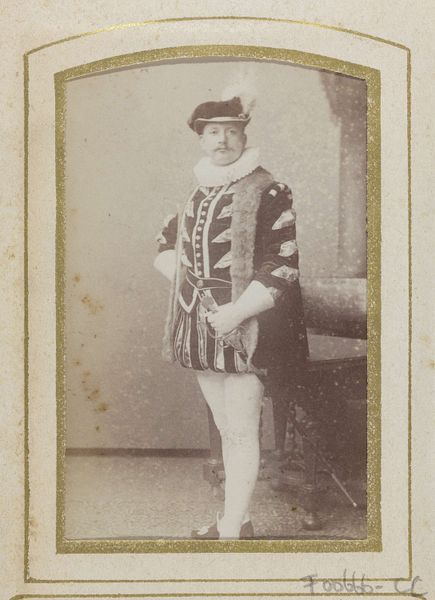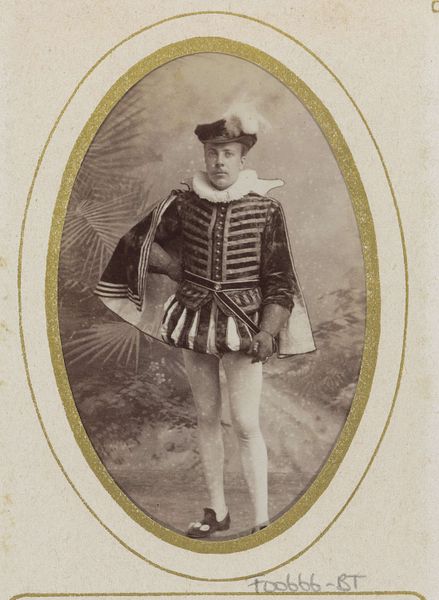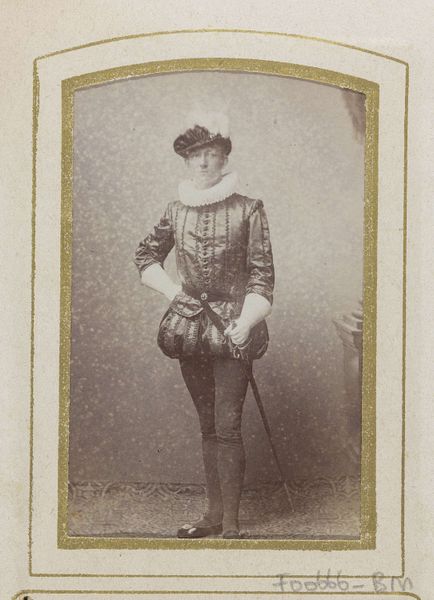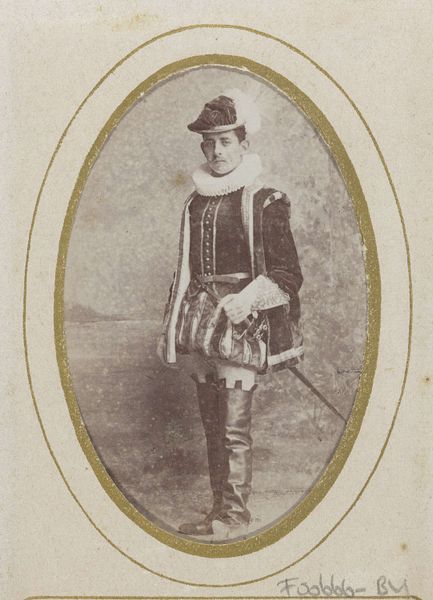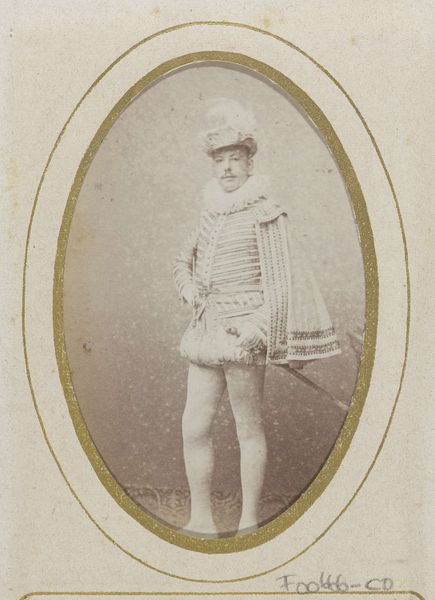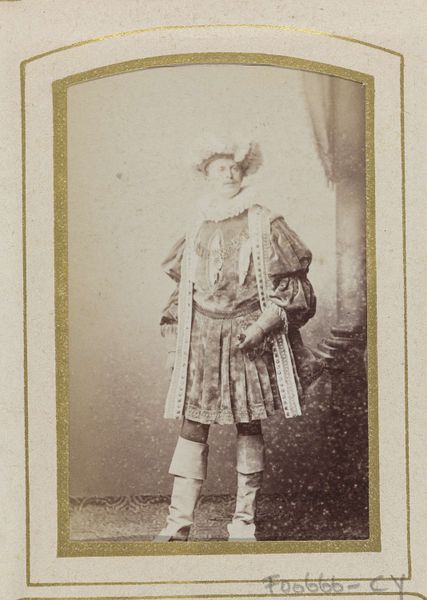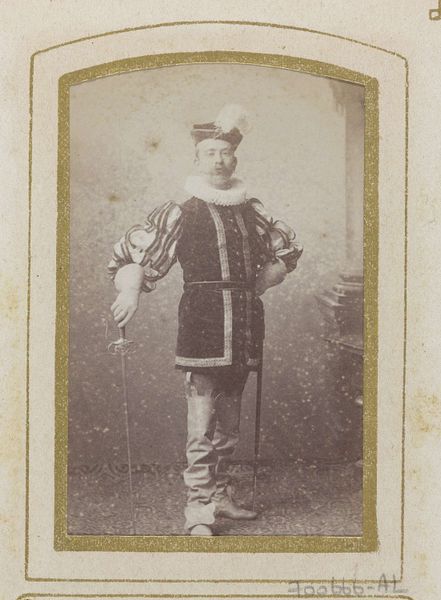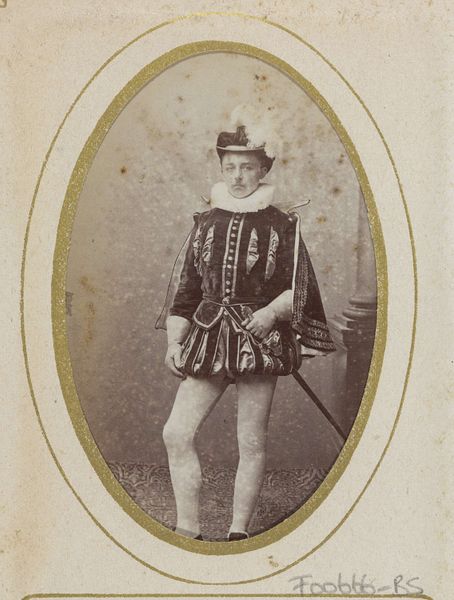
Portret van een jonge man in kostuum met degen, aangeduid als E.J.W. Holleman 1860 - 1905
0:00
0:00
photography, gelatin-silver-print
#
portrait
#
16_19th-century
#
photography
#
gelatin-silver-print
#
19th century
#
history-painting
Dimensions: height 83 mm, width 52 mm
Copyright: Rijks Museum: Open Domain
Curator: Look at this striking gelatin-silver print, likely produced between 1860 and 1905 by Jan Goedeljee. It’s titled "Portret van een jonge man in kostuum met degen, aangeduid als E.J.W. Holleman"—a portrait of a young man in costume, identified as E.J.W. Holleman. Editor: The sepia tones lend it such a somber feel. There's an interesting textural contrast—the softness of the feather against the stiff ruff collar, for example. Curator: Yes, and let's think about performance here. Consider the context of nineteenth-century portraiture, and how staging identity through costume allowed a particular self-representation. Holleman, though maybe not nobility, puts on the costume and wields the symbolic authority of a degen sword. Editor: From a formal point, that sword offers a vertical counterpoint to all the horizontals established by his striped garments. It's quite strategically placed, creating a visual anchor along the central axis. Curator: Right. Costume here isn't mere decoration; it's active self-fashioning. Who was Holleman, and why did he choose this specific historical guise? Was it a personal passion, an aspiration, a family tradition? To what extent can such portraits reinforce existing hierarchies? Editor: Absolutely. Thinking about semiotics, the costume, the sword, even the backdrop contribute to a system of symbols, projecting an idea of status. It all combines in this very specific moment in front of the lens. Curator: It is a reminder that even ostensibly "straightforward" portraiture can become a site of complex cultural production—reinforcing notions of power and performance while raising the interesting question of costuming as class masquerade. The image prompts consideration of gender as performance, even a deconstruction of masculinity through staged effeminacy. Editor: Indeed. It's the subtle tension of historical detail viewed through the lens of careful composition that ultimately compels. Curator: I think this photograph invites us to examine not just the person depicted, but the socio-political climate in which such performative displays became both possible and popular. Editor: And viewed now through our own lenses, the portrait asks to be actively reimagined as so much more than it was.
Comments
No comments
Be the first to comment and join the conversation on the ultimate creative platform.
